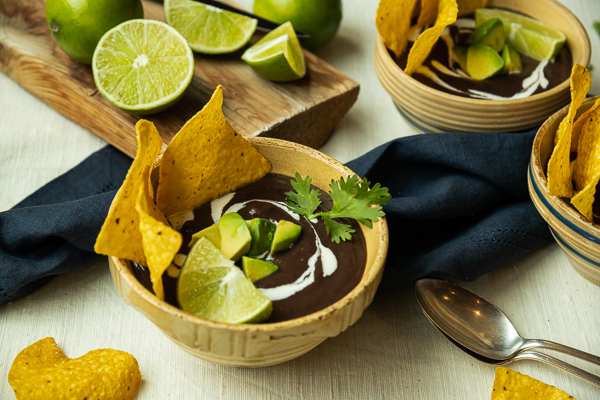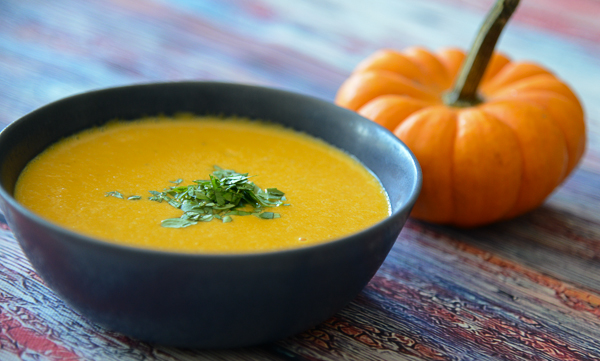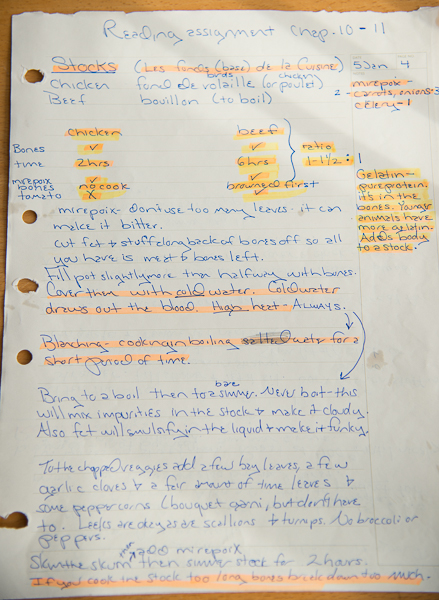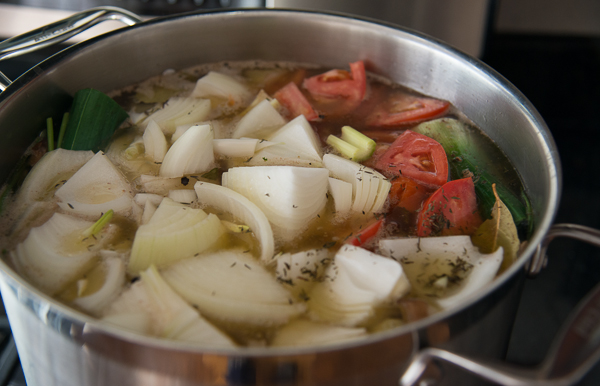I’ve been on a Mexican food kick since before Cinco de Mayo. I have always loved Mexican food, and at times it’s been a little difficult to come by. Several years ago we lived in Herrenburg, Germany, located on the border of the Black Forest. There actually was a Mexican restaurant in our small town. It was called Los Zapatos, translated to “the shoes.” However, when I discovered their idea of salsa was ketchup, and the entrees really did taste like shoes, it was back to my own kitchen for my Mexican food fix. Now that I live in Montana, I still have not managed to find a Mexican restaurant that I really like. Once again I’m relying on my cookbooks and cooking skills for the Mexican food I love.

Black bean soup is not strictly Mexican, as it’s popular all over Latin America. I’ve been making it for years, and not just when I lived in Latin America. It was a frequent request from friends when I lived in Greece. So much so that when my best Greek friend traveled from London to Maryland to attend my wedding I served it at our rehearsal luncheon.

This black bean soup recipe takes some time, but most of it is hands off simmering. You don’t need to soak the beans first. Just bring them to a boil then set aside for an hour and get on with your day. I like a really smooth soup, so I use a high-speed blender to puree it. The result is a delicious creamy soup that makes a great lunch or dinner with a green salad on the side.
Black Bean Soup
6 Servings
A delicious creamy soup for any time of the year. Don’t forget the garnishes – cilantro, tortilla chips, hot sauce, avocado and lime wedges, especially lime wedges. Pick one or do as I do and pile it on. Vegetarian? No problem. Just eliminate the ham hocks.
1 pound black beans
10 cups water
2 ham hocks
2 stalks celery, chopped
2 cloves garlic, minced
2 white onions, chopped
1/2 teaspoon pepper
1/4 teaspoon ground allspice
1 tablespoon beef or pork stock base (I used Better than Boullion)
1 8-ounce can tomato sauce
1/2 cup dry red wine
Salt and pepper to taste
1 lime, cut into wedges
Garnishes – sour cream, tortilla chips, hot sauce, chopped avocado, and cilantro leaves
Place beans in a large soup pot, cover with water and bring to a boil over high heat. Boil for 2 minutes, then remove from the heat and set aside for 1 hour.
Add the ham hocks, celery, garlic, onions, allspice and stock base. Bring to a boil, then lower heat and simmer until the beans are completely cooked. This will take 2-3 hours, depending on how fresh your beans are.

Remove the ham hocks from the soup. Add the tomato sauce and the wine and stir to combine. Working in batches, puree the soup in a blender. Alternatively, you could use a stick blender, but it won’t be as smooth. Remove as much of the meat from the ham hocks as possible, chop it and add it to the pureed soup. Reheat the soup and serve with as many garnishes as you like.
Adapted from my ancient copy of the Sunset Magazine Mexican Cookbook






























